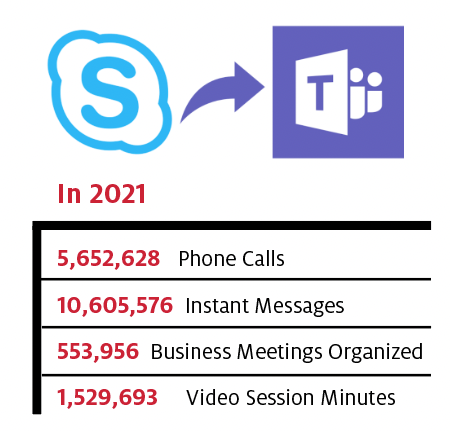Collaboration and Unified Communications
OVERVIEW
Users expect communication and the ability to share information and stored data to be seamless, uninterrupted and available wherever they may be. Lines are blurring and even disappearing between services that once were distinct (e.g., PBX, meetings and conferences, customer call centers, email, instant messages, file sharing, collaboration, integration between applications).
ALIGNMENT
- With the University — Competitive Resources: The evolution from conventional telephony to unified communications - Lync to Skype for Business (SFB) and now, to MS Teams - to manage the confluence of communication and information helps maintain a resource base that keeps UH competitive.
- With the State — Mobile & Digital Services: Continuing the growth of a unified communications platform supports the growing reliance on mobile devices to make business communication continuous, robust and portable.

CURRENT STATE
- Deployed MS Teams universitywide for all students, faculty and staff.
- Increased adoption of MS Teams for work team collaboration, allowing sharing of information and simultaneously working on the same documents with added audio, video, instant messaging and whiteboarding.
- Implemented AudioCodes analog gateways and high availability session border controllers.
- Completed function enhancements to the Anywhere365 call center application. We now have 13 Unified Call Centers, compared to 5 in 2019 — 260% growth in the adoption of Anywhere365.
- Collaborating with colleges, divisions and external consultants, we completed a full assessment of MS Teams telephony.
PATH TO SUCCESS
- Integrate end-user collaboration technology. Integration must be an underlying principle in choosing and implementing the tools used for data, connectivity and communication needs.
- Continually assess the future of Unified Communications, including the implementation of cloud PBX and emerging solutions such MS Teams.
FY2022 INITIATIVES
- Implement an operational pilot for MS Teams telephony.
- Enhance cellular coverage on campus using the campus Wi-Fi infrastructure and Passpoint technology.
- Initiate the deployment of high performance 5G cellular networks by implementing a Verizon 5G macrocell at TDECU Stadium.